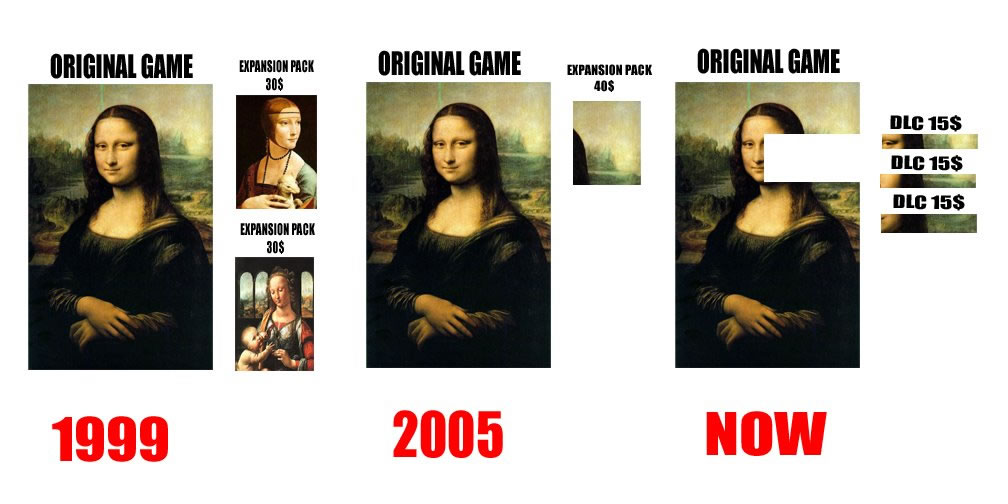Over the years the ways we’ve paid for games has changed significantly; from the game + expasion style to the game + DLC + DLC + DLC to the completely free.
One of my first games was Age of Mythology (yep, not that old) and I remember getting the base game for $60, and then the expansion for $20. The expansion added a whole other faction as well as lots of additional gameplay features.
Downloadable Content
Skip ahead to February this year, and Dead Space 3 is released, with eleven DLC packs on release day. Sure, for DLC these were cheap, only $4.99, but eleven? On release day? And of course, that’s in addition to the game’s in-game store where you can purchase weapon improvements. It seems ridiculous that this content wasn’t included as part of the base game.
Another example of excessive DLC is Battlefield 3. I was keen on this game so I pre-ordered it for $60, partly to get, as advertised, its first DLC pack (valued at $15) for free, which was exclusively for pre-ordering customers. On release day though, this version of the game was available for the same price from retailers. So essentially the first DLC pack was part of the base game. Four months later, three more DLC packs ($15 each) were announced for Battlefield 3, and then Premium was announced containing all the DLC for $50. Comparing this to the old style base game + expansion, the total content is nearly identical, only more expensive!

The rise of DLC
Free to Play
Then there’s the newish F2P model. While this varies a lot, it essentially means you can acquire and play the game for free, and the company makes its money from some other payment method, likely a form of in-game transactions. Two good examples of this model are Star Wars: The Old Republic and League of Legends. While both technically F2P (now), one model I approve of and the other I do not.
Star Wars: The Old Republic (SWTOR) started as a pay per month game, which was a model I wasn’t a huge fan of, but accepted nonetheless. Once the game started to lose players, the game became F2P in the hopes that it would attract more, which in itself is not a bad thing.
The bad thing was the F2P model they used. My guild and I referred to it as “free to log on” because to get anything even remotely similar to the experience of SWTOR that we were used to, you had to pay nearly as much as the monthly subscription fee. Also many of the rare and expensive items were now available for small change in the in-game store. For many of us the transition to F2P along with the (still) low population ruined the game, and we ended up quitting SWTOR.

EA really screwed over F2P players in SWTOR
In contrast, League of Legends has a superior F2P model. There are around 100 champions to play, 10 of which are free at any given time and the exact champions that are free varies each week. More champions can be bought either by spending money or simply by playing the game, and it’s perfectly playable just using the free champions plus the ones you earn in-game. The only other thing that can be paid for with real money are champion “skins” which change how a champion looks without changing its gameplay or power. By limiting what can be bought with real money, the developers, Riot Games, don’t give any kind of unfair advantage to paying players.
As much as some of us may hate DLC, it seems like it’s here to stay. I just hope we see less of things like “day one DLC” and more methods of payment which are fairer to the players.






Published: Apr 30, 2013 02:46 pm